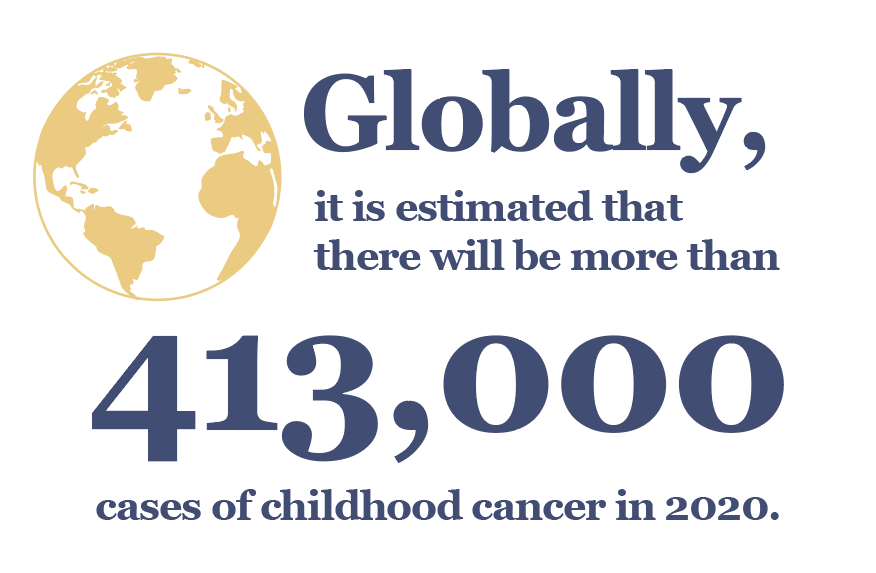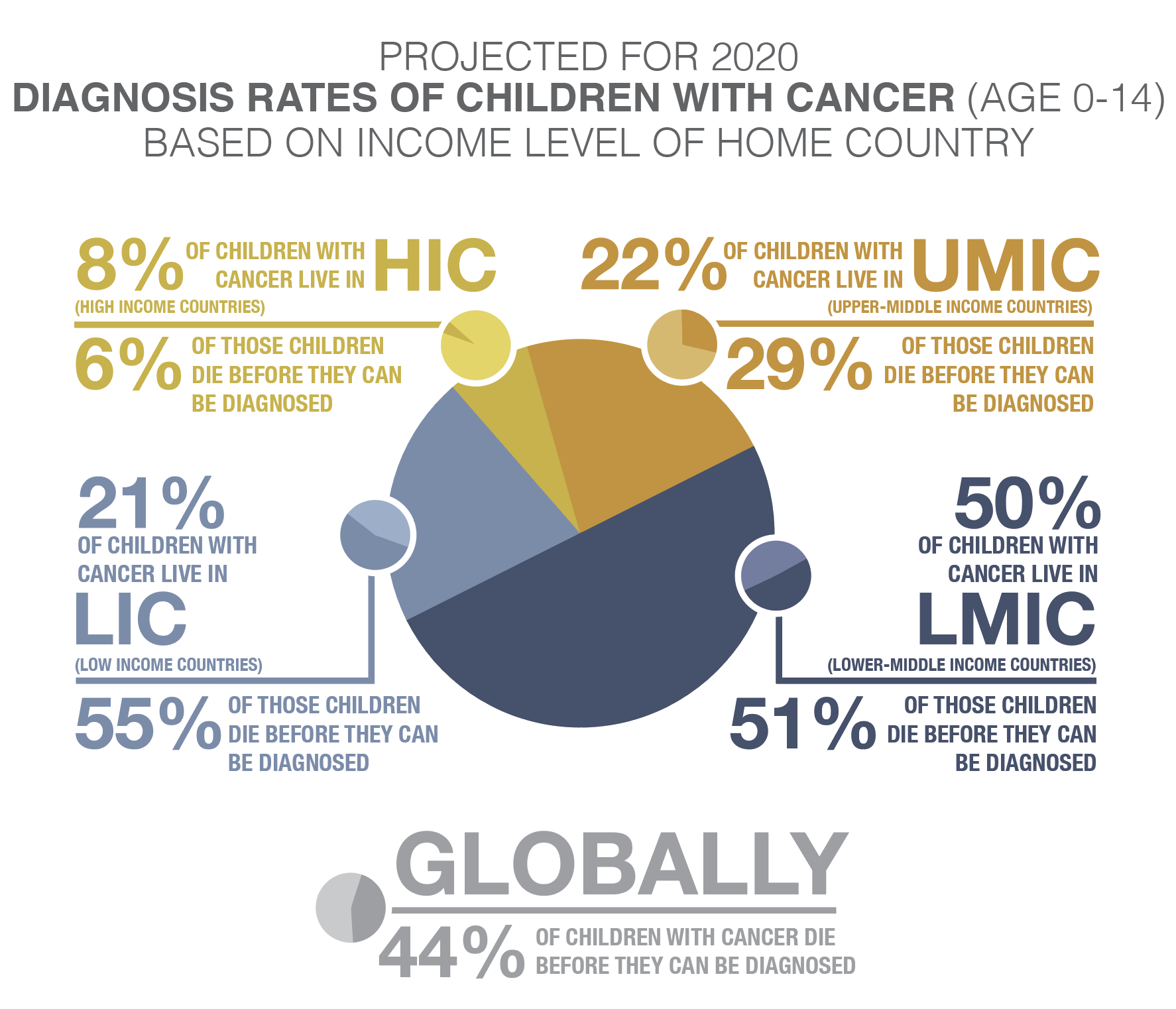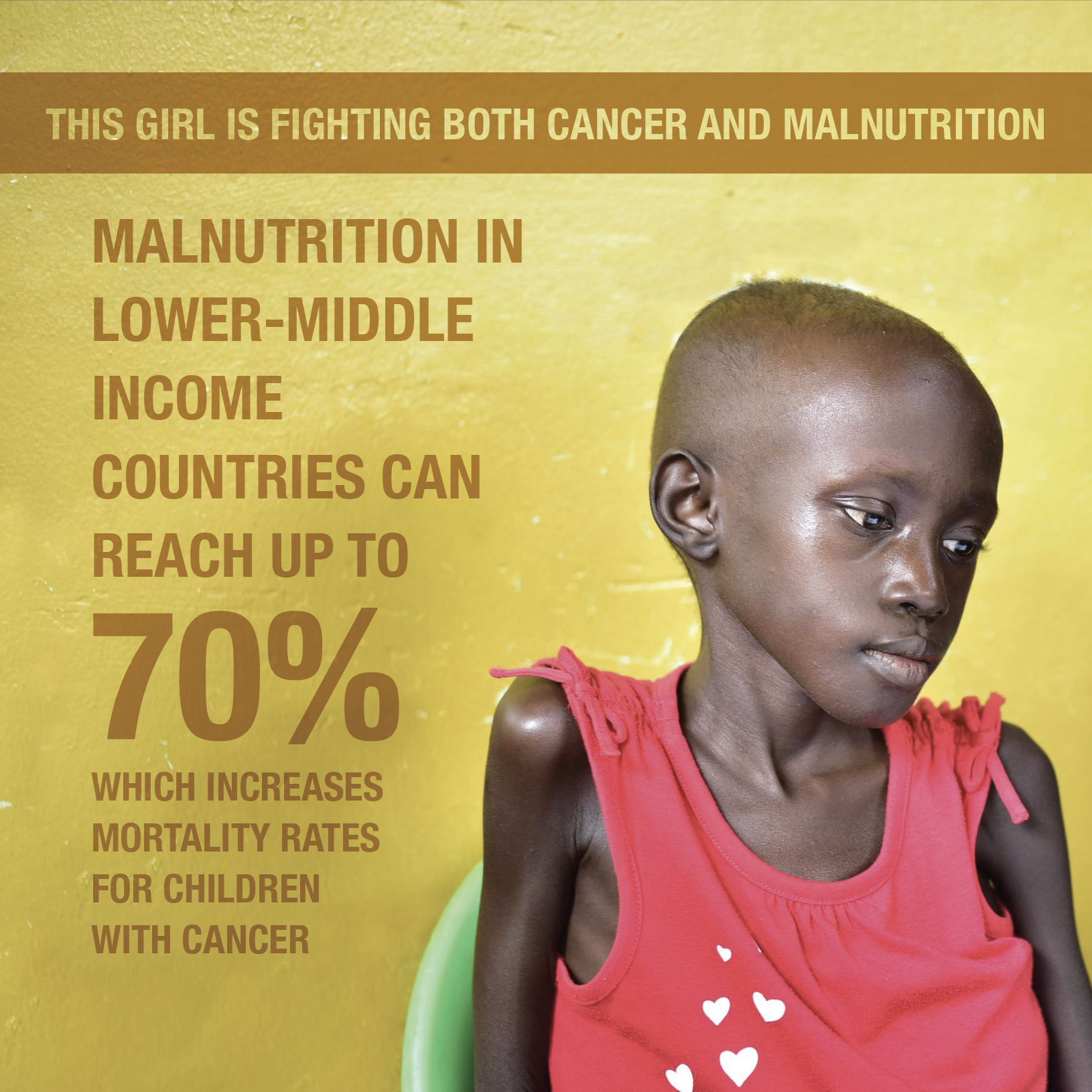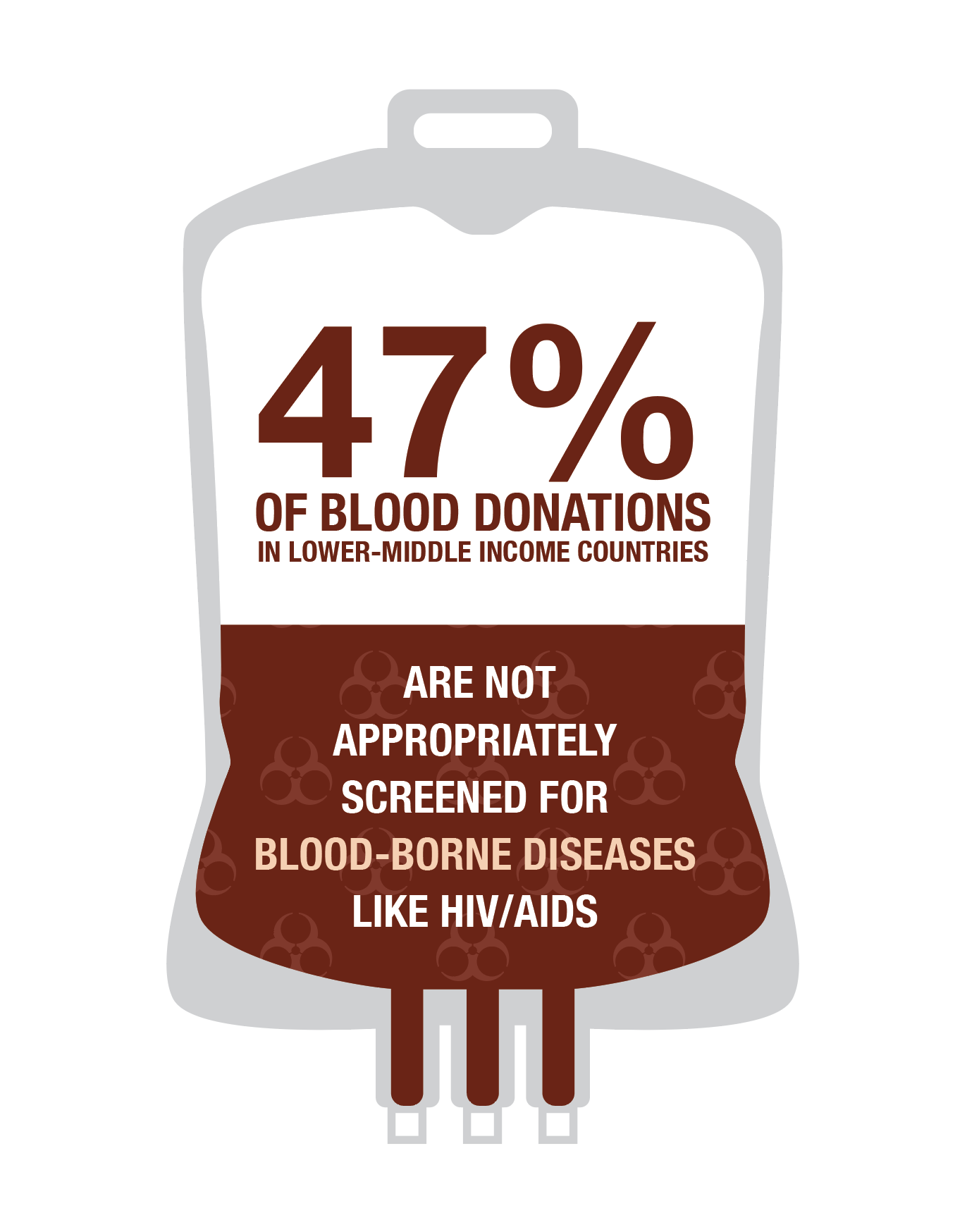The statistics on this page are sourced from the Lancet. Click here to read the full article.

Childhood cancer is a global problem that children and their families struggle with in every corner of the earth. Even with optimal treatment and resources, cancer is a devastating diagnosis. In nations where these resources are limited, the statistics are chilling. Recent studies have highlighted the stark disparity in diagnosis, treatment, and care for children with cancer in different parts of the world.
Globally, it is estimated that there will be more than 413,000 cases of childhood cancer in 2020. Worldwide, it is estimated that 328,000 children (diagnosed and undiagnosed) die from cancer each year. Every 1 ½ minutes a child dies from cancer. That makes childhood cancer the leading non-communicable disease killer of children around the world, regardless of where they live.

Failure to Diagnose
The first step in battling cancer is always a diagnosis. Medical professionals cannot provide treatment for an ailment they don’t know the existence of. Resource-limited regions have staggeringly low diagnosis rates for a variety of reasons. Lack of medical resources, poor awareness about the symptoms and treatment of cancer, and reliance on traditional medicine all play a part. Globally, only 44% of children with cancer are correctly diagnosed.
Refusal or Abandonment of Treatment
There are many reasons why parents in resource-limited regions are more likely to abandon treatment than parents in regions with adequate resources. Sometimes the medical treatment is unaffordable for them, either through the direct financial cost of the treatment or through the indirect costs of restructuring their lives. Giving up on treatment may seem unthinkable, but when the treatment is too expensive to afford, agonizing for the child, and unlikely to even save the child’s life, we can start to understand why so many parents make this painful decision. Abandonment of treatment affects up to 50-60% of children with cancer in some regions.

Malnutrition
Both cancer itself and the treatments for cancer are demanding on the human body, especially when that body is young and small. Because of this, survival rates drop dramatically when children are already weakened by malnutrition. The prevalence of malnutrition can reach 50-70% in some regions.
Lack of Palliative and Survivorship Care
Most medical facilities in resource-limited regions cannot provide adequate pain relief to their patients. This means that children are receiving intense and invasive treatments with absolutely nothing to dull the pain. In some regions, pain management is available in less than 50% of pediatric oncology units. Necessary pain-relieving medications are available in less than 15% of Lower-Middle Income Countries (LMIC).

Lack of Safe Medical Care
Medical services in resource-limited regions can’t always promise an adequate standard of safety. Death from infection is much higher in resource-limited regions. Blood products and transfusions are a standard element of many medical procedures, but only 13% of Lower-Middle Income Countries (LMIC) have a national hemovigilance system to ensure the safety of blood transfusions. In areas with high rates of blood-borne diseases, this is highly dangerous.
What is ACCO doing to help?
ACCO supports a variety of initiatives to change the numbers. Click here to visit our international advocacy page and see what we do. When you donate to ACCO, your donation can help children across the globe.
The statistics on this page are sourced from the Lancet. Click here to read the full article.


